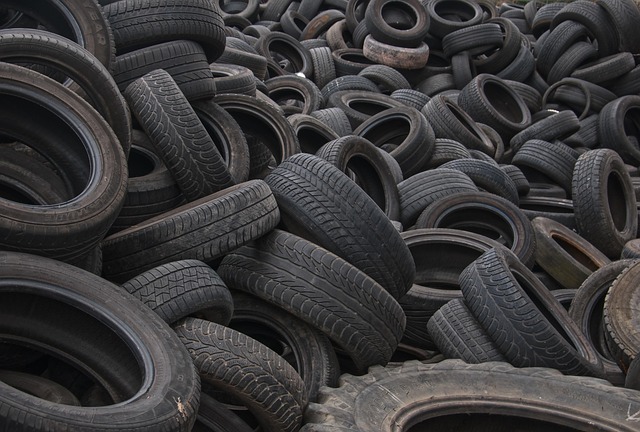Choosing the Right Tires for Your Driving Needs
Tires play a crucial role in road safety, fuel economy, and overall driving performance. From all-season to performance or off-road options, choosing the right set depends on climate, usage, and vehicle type. Knowing your needs helps avoid unnecessary costs and improves comfort.

Understanding Different Tire Types and Their Applications
The first step in selecting the right tires is understanding the various types available and their intended purposes. All-season tires are designed to provide adequate performance in various conditions, making them suitable for drivers who experience moderate weather variations. They offer a good balance of features with acceptable performance in wet conditions and light snow.
Summer tires, by contrast, excel in both wet and dry warm conditions, providing enhanced grip and handling. However, they perform poorly when temperatures drop below 45°F (7°C), becoming hard and losing traction. Winter or snow tires are specifically engineered with deeper treads and special rubber compounds that remain flexible in cold temperatures, dramatically improving traction on snow and ice.
For those who frequently venture off paved roads, all-terrain or mud tires offer aggressive tread patterns designed to grip unpaved surfaces while still functioning on highways. Performance tires prioritize handling and grip at higher speeds but typically wear faster and provide a firmer ride than standard options.
Evaluating Tire Brands and Quality Factors
When choosing between tire brands, several factors merit consideration beyond simple price comparison. Established manufacturers with extensive research and development programs often produce tires with advanced technologies that enhance performance and longevity. Companies like Michelin, Continental, Bridgestone, Goodyear, and Pirelli have long histories of innovation and quality control.
Tire quality can be assessed through several standardized indicators. The Uniform Tire Quality Grading (UTQG) system rates tires on treadwear, traction, and temperature resistance. Higher treadwear numbers indicate longer expected life, while AA, A, B, or C ratings represent descending levels of traction and heat resistance capabilities.
Customer reviews and independent testing results from organizations like Consumer Reports or Tire Rack provide valuable insights into real-world performance. When evaluating options, consider your specific needs—such as climate conditions, driving style, and typical road surfaces—rather than simply choosing the most expensive option or the one with the longest warranty.
Essential Tire Maintenance Practices for Extended Lifespan
Proper maintenance significantly extends tire life and maintains optimal performance. Regular pressure checks are fundamental—underinflated tires wear unevenly, reduce fuel efficiency, and can lead to dangerous blowouts. Check pressure monthly when tires are cold, and follow the vehicle manufacturer’s recommended PSI levels found on the driver’s door jamb or in the owner’s manual.
Rotation patterns help distribute wear more evenly across all tires. Most mechanics recommend rotations every 5,000 to 8,000 miles, though specific patterns depend on your vehicle’s drive configuration (front-wheel, rear-wheel, or all-wheel drive). Wheel alignment should be checked annually or whenever you notice your vehicle pulling to one side, as misalignment causes premature and uneven tire wear.
Driving habits dramatically affect tire longevity. Rapid acceleration, hard braking, and taking corners at high speeds all increase wear rates. Maintaining moderate speeds not only preserves your tires but improves fuel economy as well. Finally, protect tires from environmental factors by parking in shaded areas when possible, as prolonged UV exposure can degrade rubber compounds over time.
Recognizing Warning Signs for Tire Replacement
Even with diligent maintenance, all tires eventually require replacement. The most obvious indicator is tread depth, which can be measured using the penny test—if Lincoln’s head remains fully visible when the coin is inserted into the tread groove head-first, the tire has worn below the safe minimum of 2/32 inch and needs immediate replacement.
Uneven wear patterns often signal underlying issues. Excessive wear along the center indicates overinflation, while wear along both edges suggests underinflation. Wear on just one edge may indicate alignment problems. Cupping or scalloping patterns typically result from suspension issues or improper wheel balancing.
Physical damage requires careful evaluation. Small punctures can often be repaired, but sidewall damage, bulges, or blisters indicate structural compromise and necessitate replacement regardless of remaining tread. Age is another consideration—many manufacturers recommend replacement after six years, even if tread depth appears adequate, as rubber compounds deteriorate over time.
Decoding Tire Specifications and Sizing Information
Understanding the alphanumeric code on your tire’s sidewall helps ensure proper replacement. For example, in P215/65R16 95H, “P” indicates a passenger vehicle tire, “215” represents width in millimeters, “65” is the aspect ratio (height as a percentage of width), “R” means radial construction, “16” is the wheel diameter in inches, “95” denotes the load index, and “H” indicates the speed rating.
When replacing tires, matching or exceeding the original specifications is crucial for safety and performance. Deviating significantly from manufacturer recommendations can affect handling, speedometer accuracy, and potentially void vehicle warranties. The vehicle manual provides guidance on acceptable alternatives if the exact original equipment manufacturer (OEM) tire is unavailable.
Conclusion
Selecting the right tires requires balancing multiple considerations including driving conditions, performance requirements, and budget constraints. By understanding tire types, quality factors, maintenance practices, and replacement indicators, you can make informed decisions that enhance safety and maximize value. Remember that tires represent a significant investment in your vehicle’s performance and, more importantly, your safety on the road.




